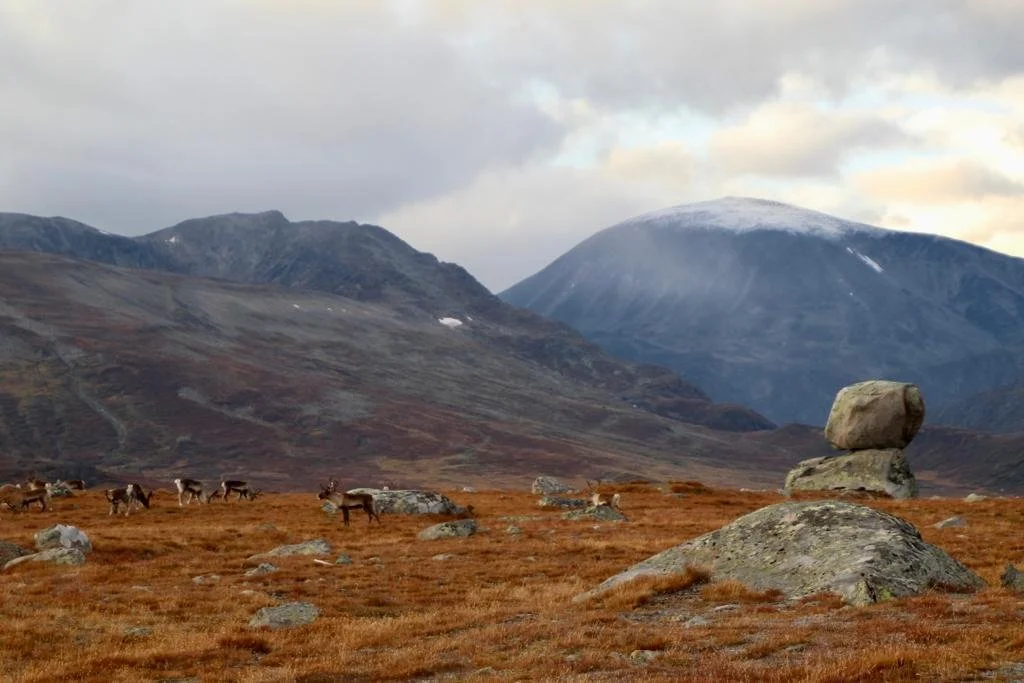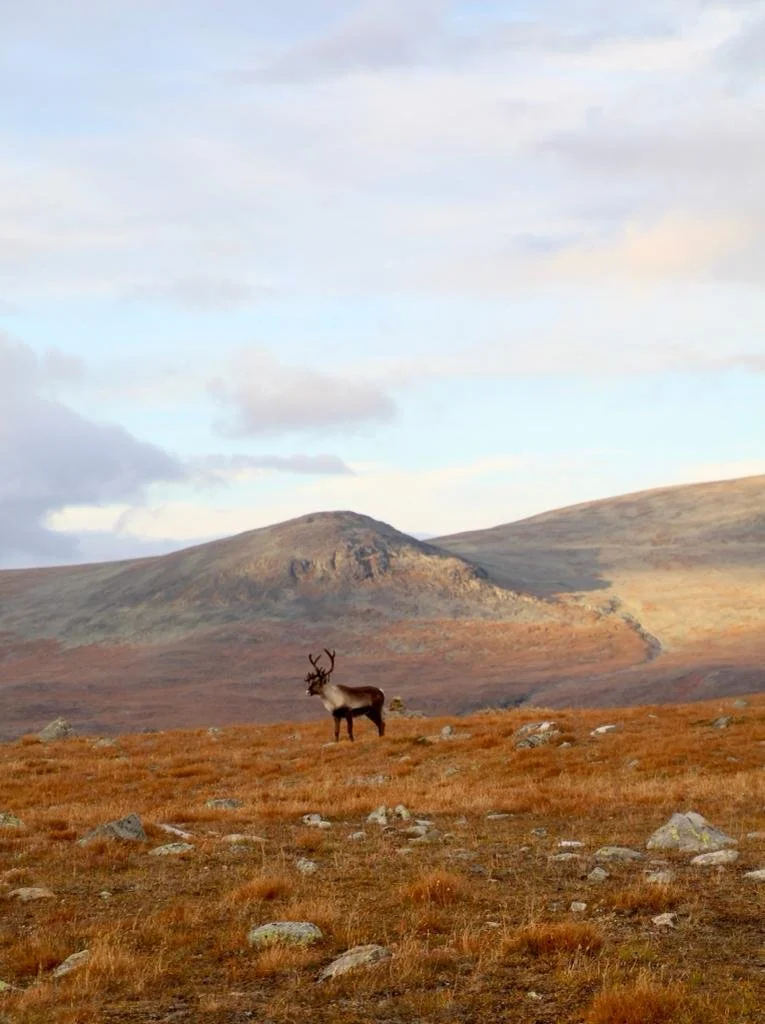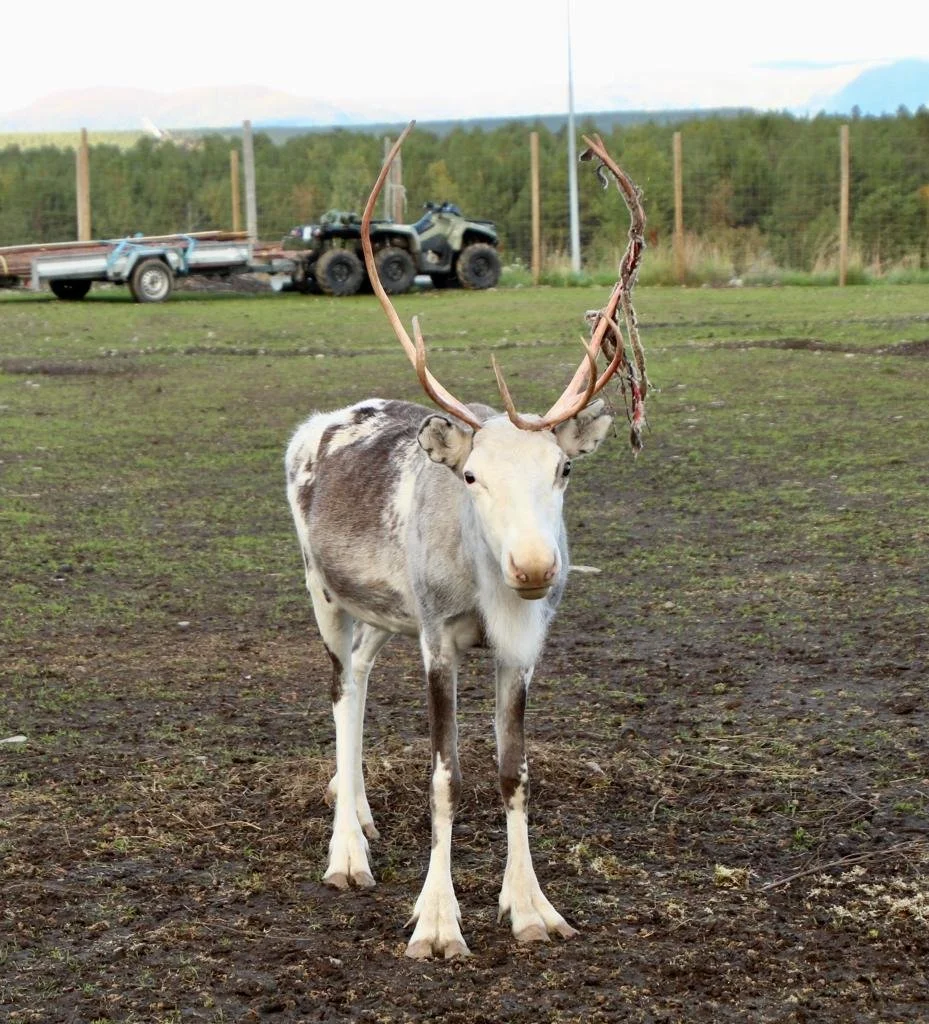Reindeer and changing climate in Arctic Europe
Reindeer grazing near Jotunheimen, Norway. Photo by Abigail Lambert.
Reindeer herding has been economically and culturally important for the Indigenous Sámi People of Arctic Europe for thousands of years. Herding and producing reindeer meat, a common food staple in Scandinavia, is a source of income for many Sámi people, as well as a way to preserve cultural and familial histories. In fact, many families continue to practice reindeer husbandry as they did since as early as 800 AD, despite substantial cultural, social, and environmental challenges throughout the last few centuries.
Although reindeer husbandry practices have developed over time, The Siida system, an ancient Sámi community system, still governs the management of reindeer herds and grazing. The Siida refers to both a designated area for herding and a working partnership where people have individual rights to resources but also assist in the communal management of herds. The Siida often consists of several families and their herds which has allowed for knowledge to be passed down through generations. Because alternate land use practices and development have encroached on reindeer herding areas in the Arctic, the International Centre for Reindeer Husbandry maintains that only Sámi people whose family currently practice reindeer husbandry may lead a Siida unit.
One Sámi reindeer herder living in Alta, Norway, who wishes to remain anonymous, remarked that “You depend so much on each other and what everybody brings to the table. We work together quite well. Of course, there's some complexity when it comes to who should do this and who should do that, but it's like that in every family.”
Reindeer grazing near Jotunheimen, Norway. Photo by Abigail Lambert.
On a normal year, reindeer herds graze throughout the summer and are rounded up in the fall to be slaughtered or taken to winter pastures. During the winter, reindeer dig up permafrost land to feed on arboreal lichen. Snow and ice conditions in the Arctic determine the availability of winter lichen forage and food supply for reindeer. Over the last several years, warmer and wetter winter conditions have led to partial snow melt which results in hard, icy layers when the ground refreezes. This makes it very difficult for reindeer to dig through layers of ice to access ground lichen and other food sources. This icing process has led to mass starvation of reindeer populations and is predicted to worsen as the effects of climate change in the Arctic increase. A reindeer herding family in Alta, Norway witnessed the temperature fluctuate by almost 40°F within 12 hours on several occasions last winter. “We realized in early February we had to start feeding them ourselves or we’d lose a huge part of our herd.”
Reindeer farm in Alta, Norway. Photo by Abigail Lambert.
To increase the resilience of their reindeer populations, herders have reorganized husbandry practices in a variety of ways including increasing the diversity and location of grazing pastures, supplemental feeding in the winter, and more closely monitoring reindeer movements and habits. To support these reorganized herding practices, many Sámi people couple both traditional knowledge and more recently adopted adaptation measures, such as tracking reindeer movements through collars equipped with GPS systems. However, all of these resilience measures are challenged by continued social-ecological change, which can also include the development of green and renewable energy infrastructure, such as tundra wind farms.
Disputes over land use are not new to this region, but local communities have yet to be fully included in the process of creating adaptation plans. Competing priorities for stakeholders and rightsholders reflect a greater picture of the effects of climate change on coupled social-environmental systems. As the predictability of snow and ice conditions decreases in polar regions, adaptation must include the full participation of the reindeer herding communities that these changes ultimately affect most deeply. Fully participatory processes between governments, scientists, and communities do not only acknowledge the need for an Indigenous perspective, but they function to co-produce new knowledge and approaches of collaboratively responding to change. Climatic changes further exacerbate issues of food, land, and cultural sovereignty for reindeer herders in the Arctic, highlighting a clear need for local and Indigenous communities to be included as equal partners and collaborators in resilience planning.



